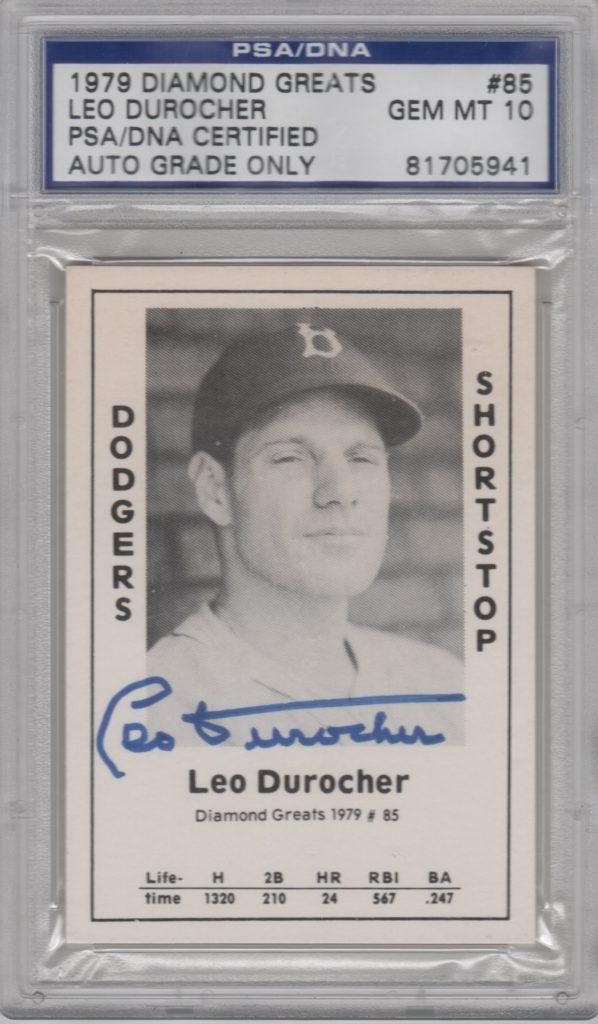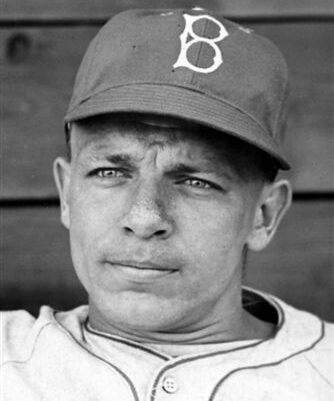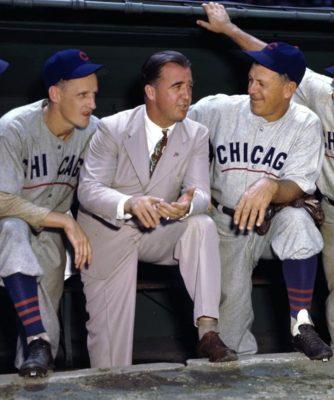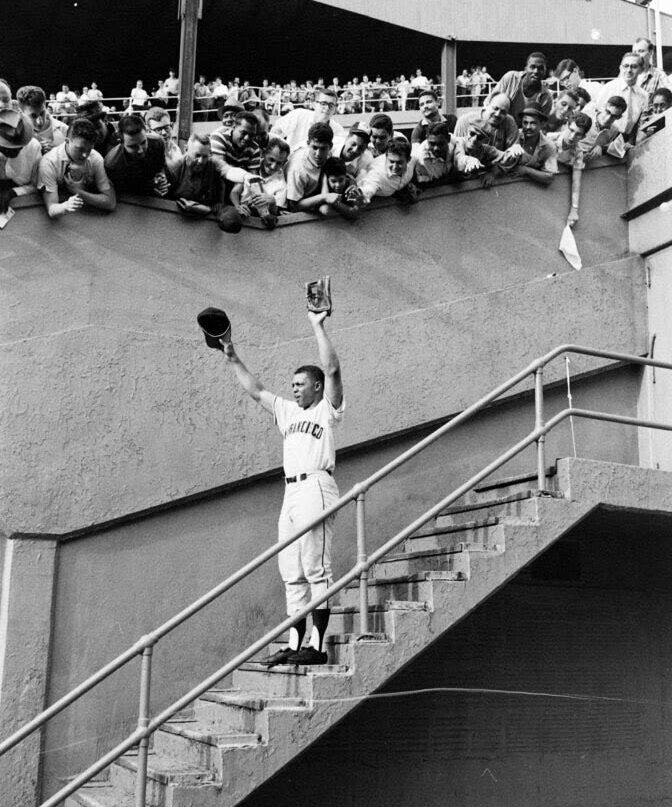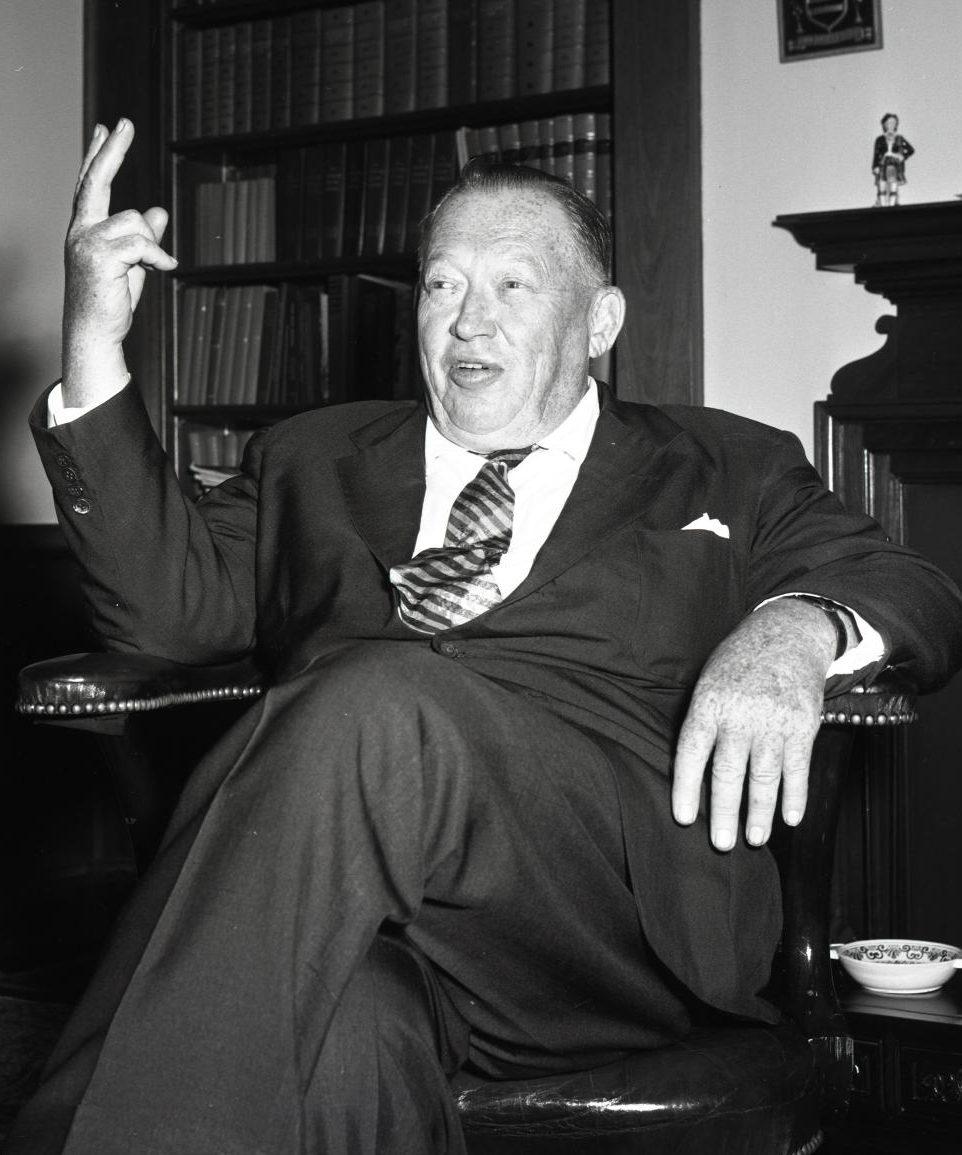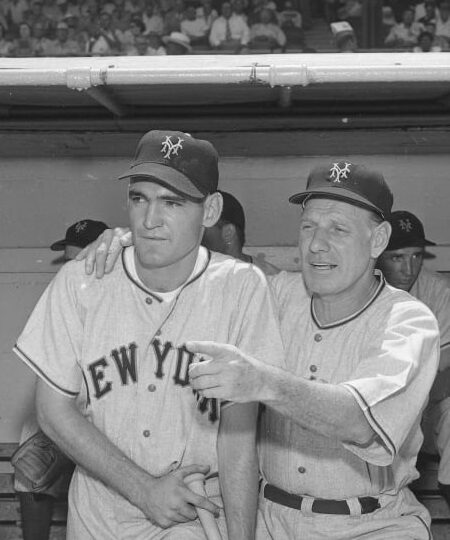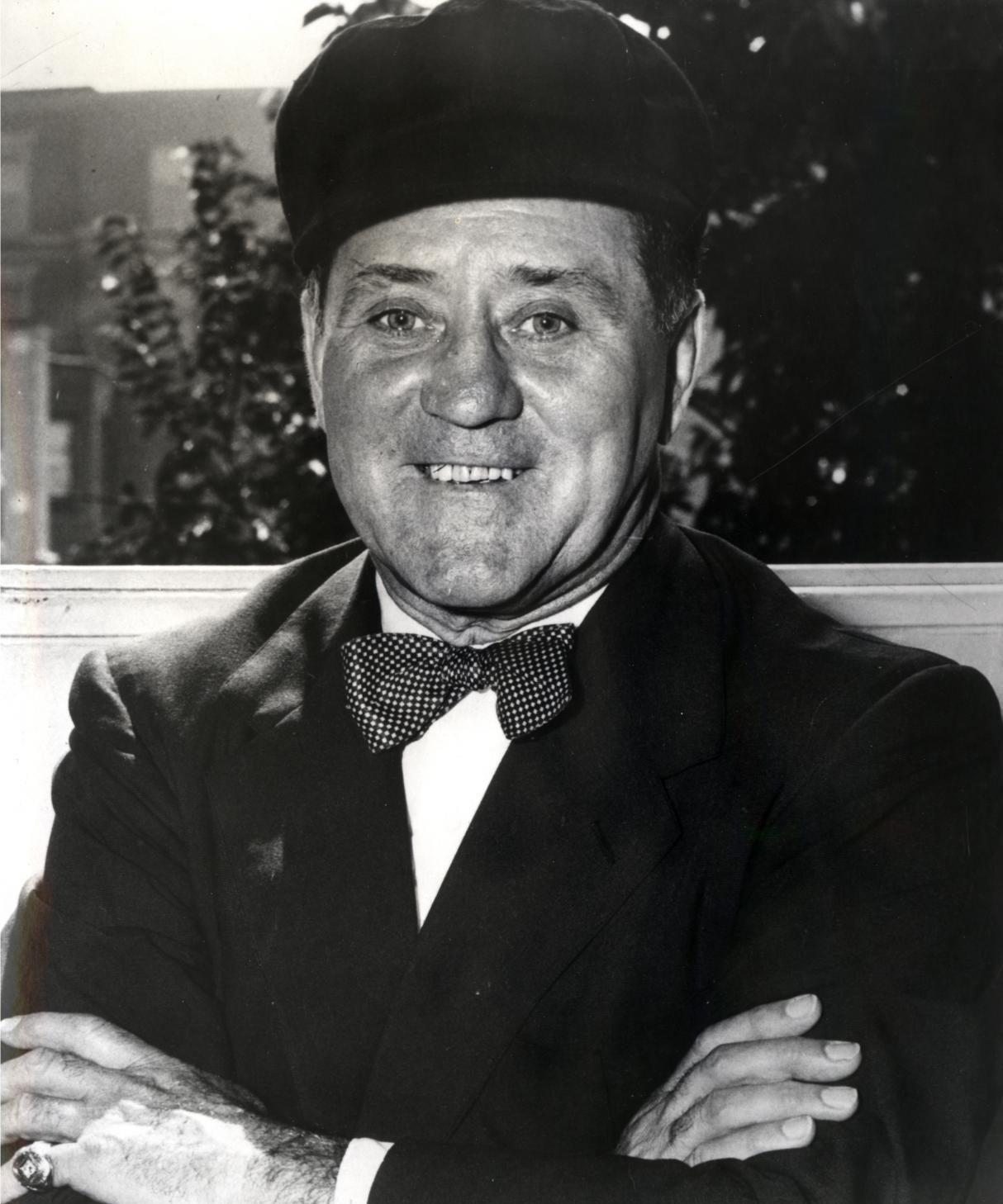Leo Durocher
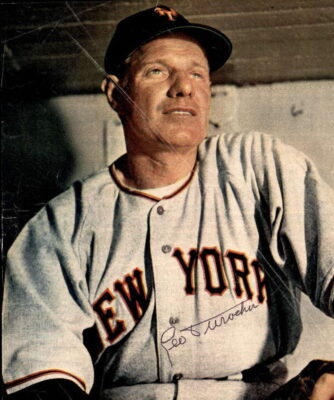
| Birthdate | 7/27/1905 |
| Death Date | 10/7/1991 |
| Debut Year | 1925 |
| Year of Induction | 1994 |
| Teams | Astros, Cardinals, Cubs, Dodgers, Giants, Reds, Yankees |
| Positions | Manager, Second Base, Shortstop |
At the time of his retirement, Leo Durocher ranked 5th all time in managerial wins and 2nd in NL history behind only John McGraw.
Leave a commentIn the collection:
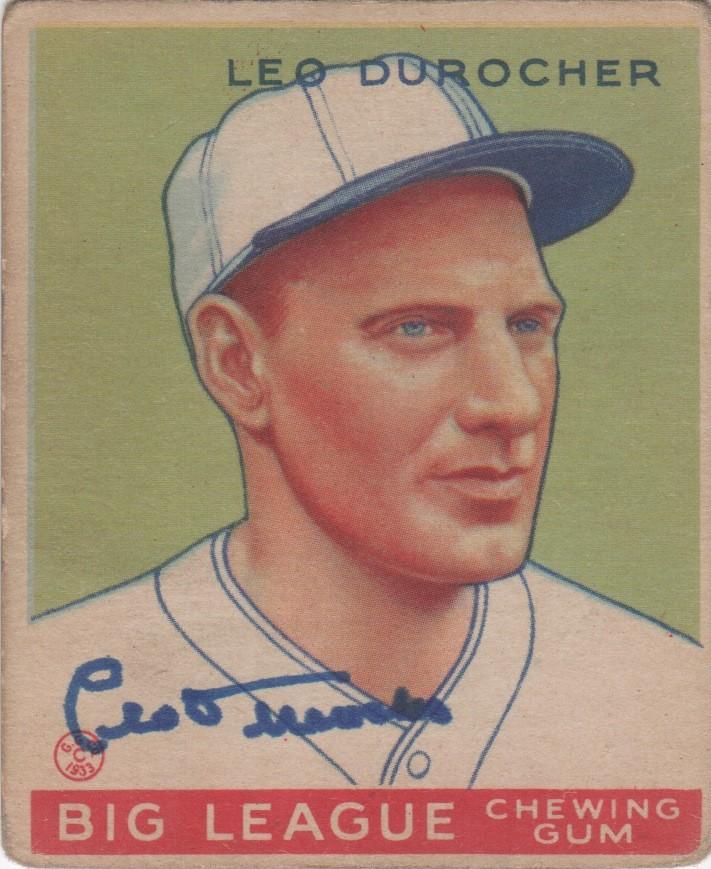
Leo Durocher earned rings with Ruth's Yankees and the Gas House Gang
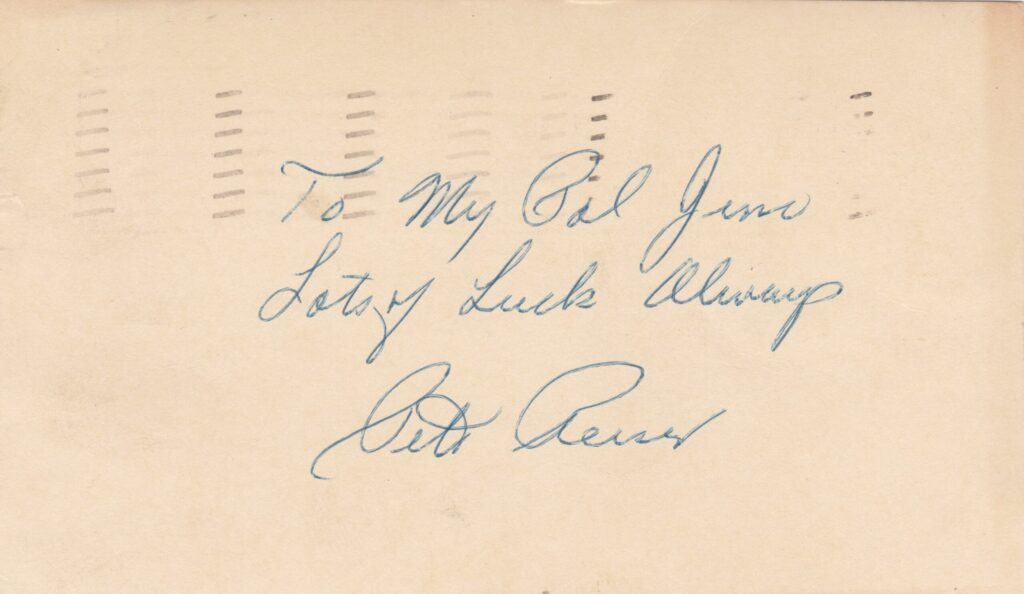
Leo played with Ruth & Gehrig, managed Mays, & called Pete Reiser the best
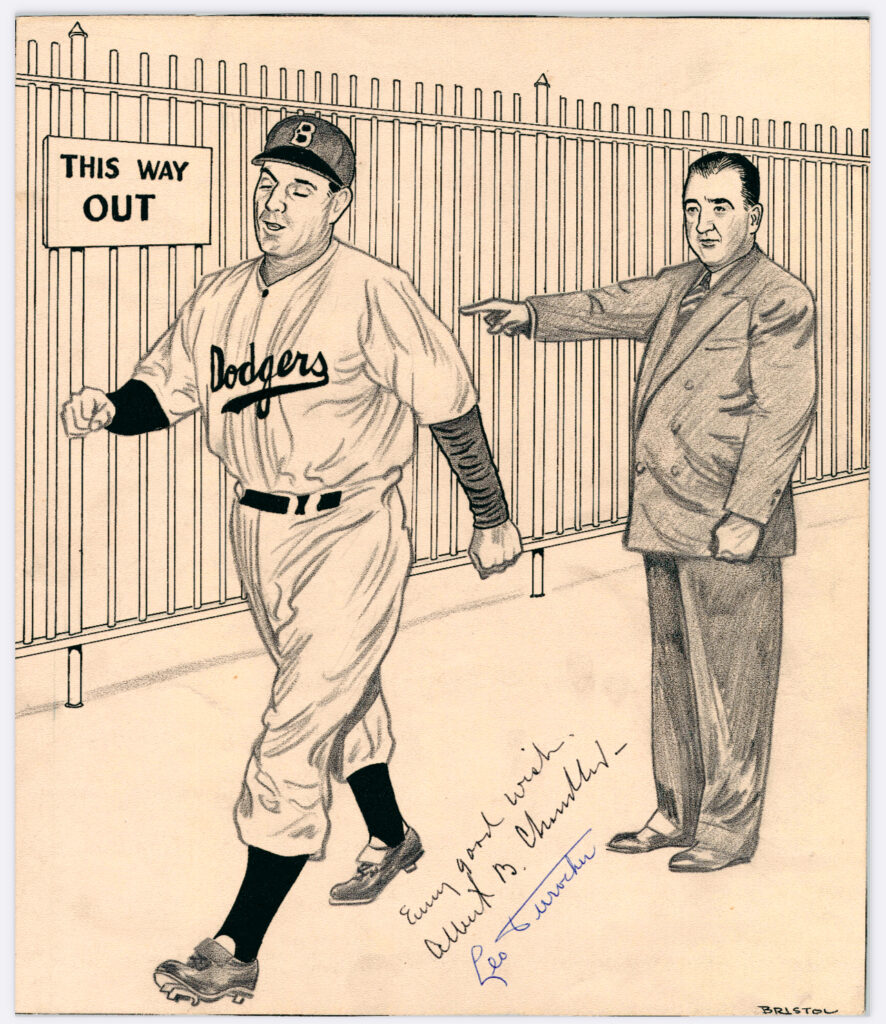
Before the 1947 season Leo Durocher was slated to usher in Jackie Robinson with the Dodgers
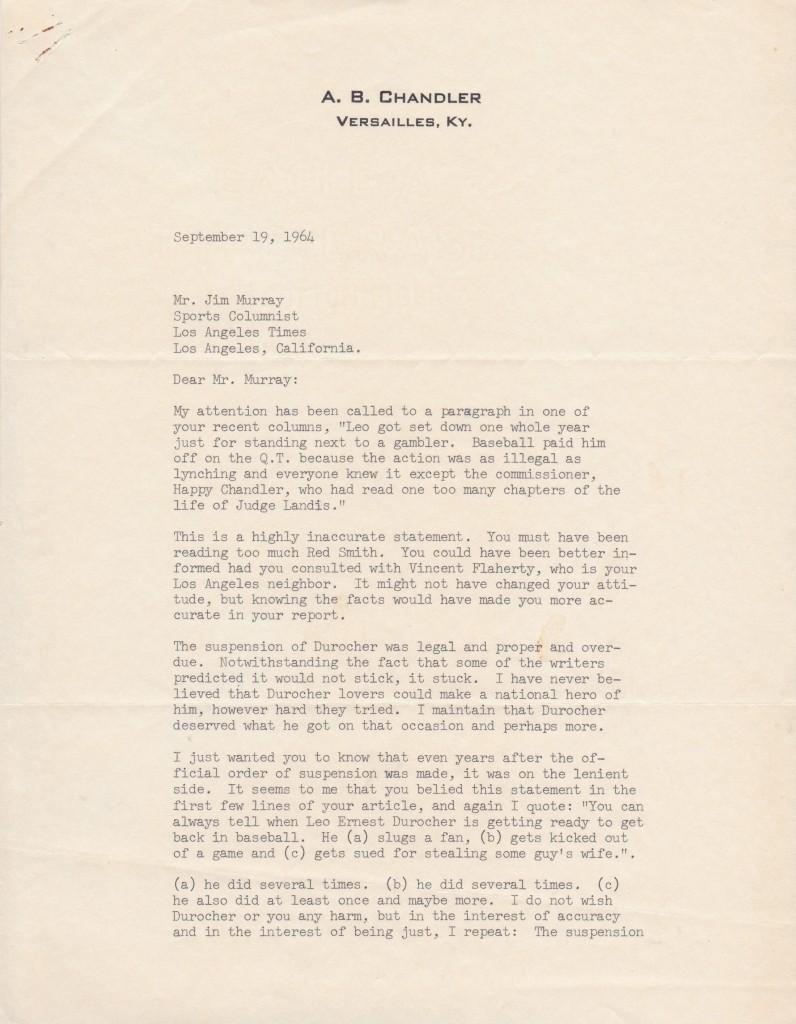
Commissioner Happy Chandler suspended Durocher for all of 1947
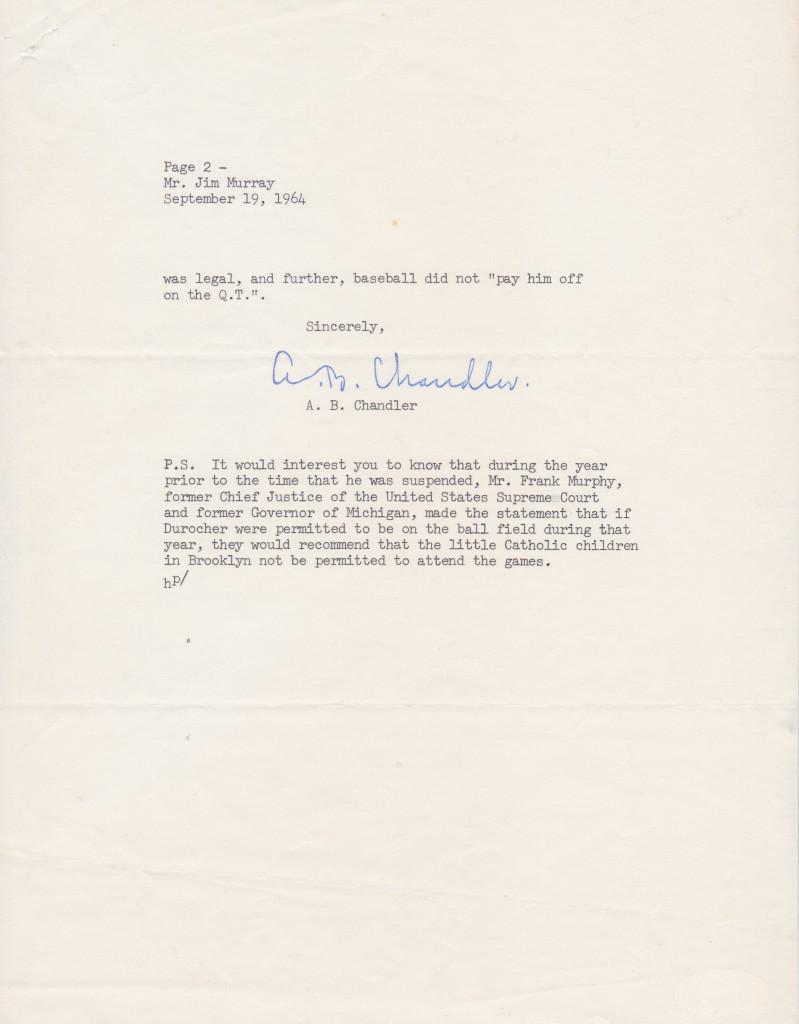
Many agreed with Chandler that Durocher should face suspension
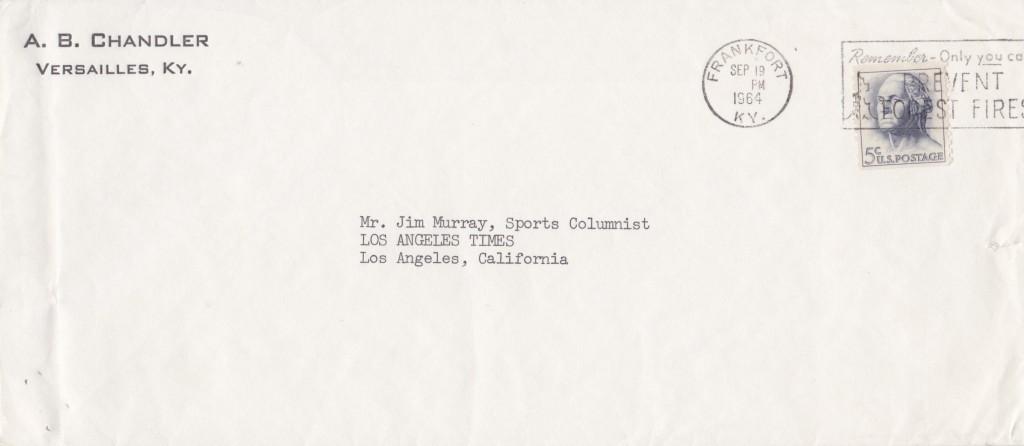
Chandler wrote the letter to Hall of Fame writer Jim Murray
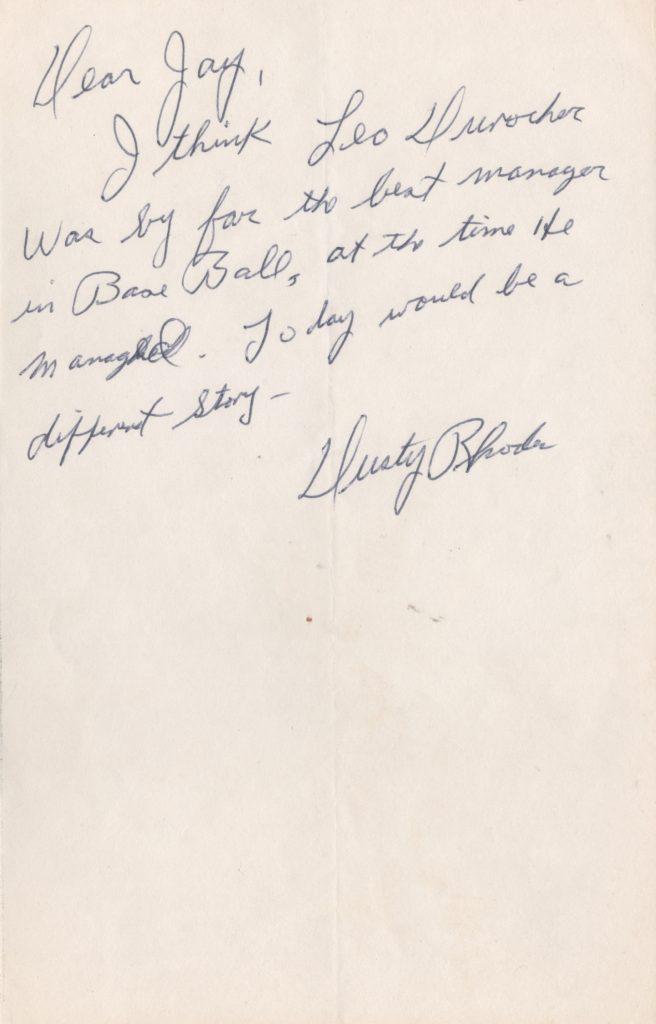
World Series hero Dusty Rhodes writes about his manager Leo Durocher
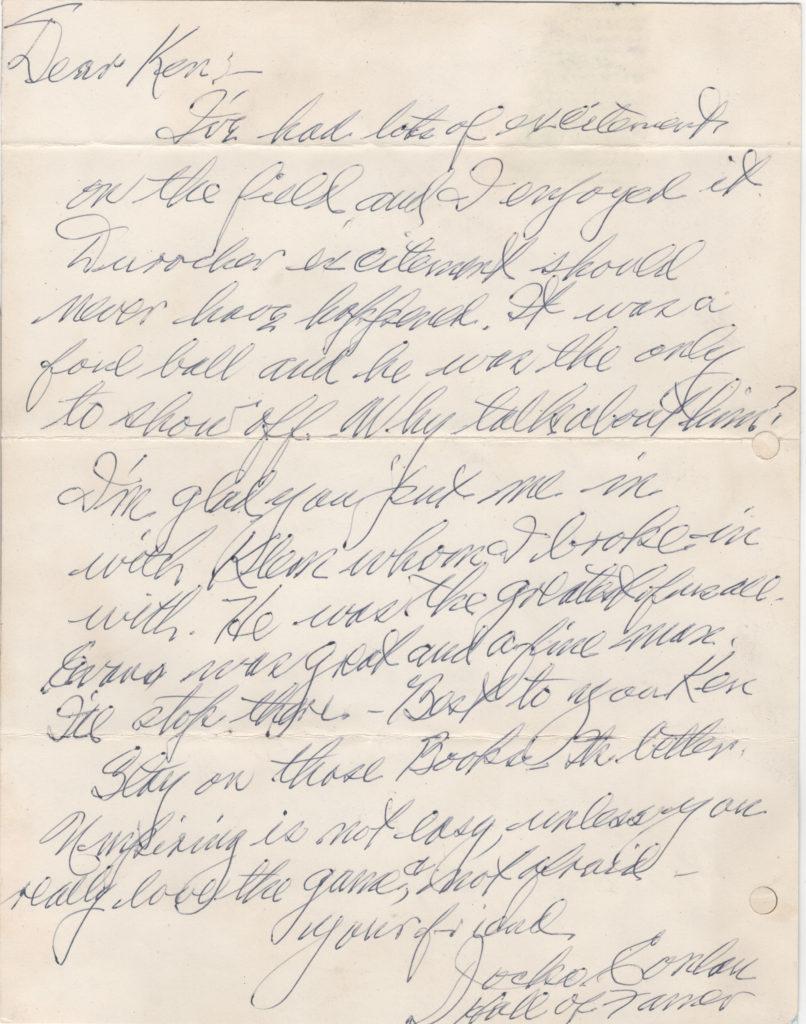
HoF umpire Jocko Conlan writes about shin-kicking incident with Leo
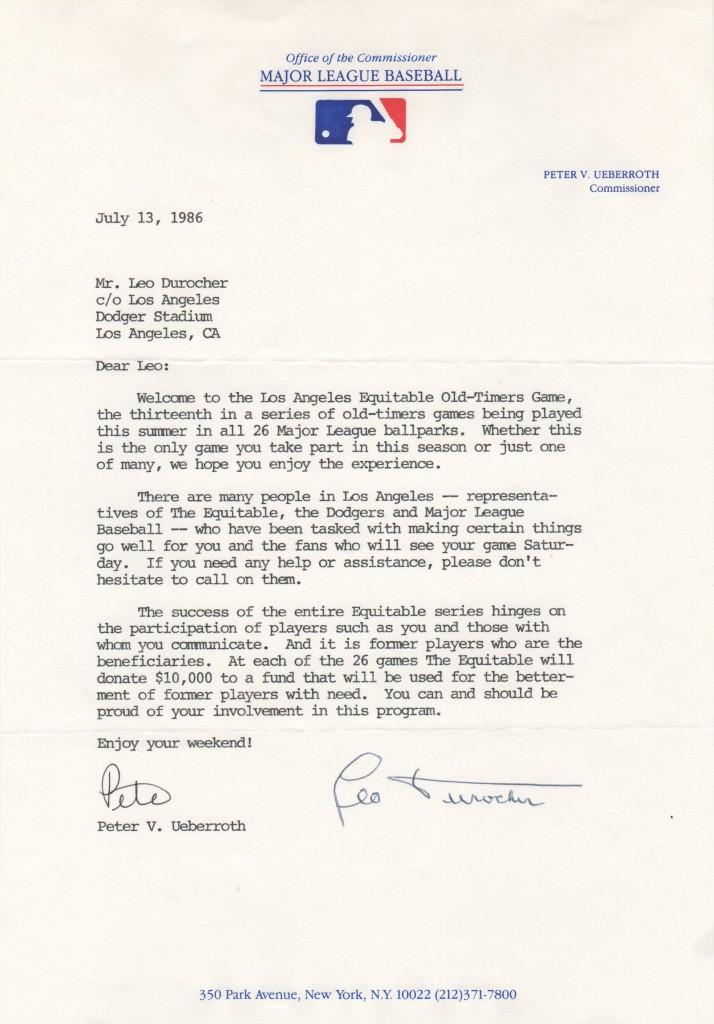
Durocher remained close to the game until his death in 1991
